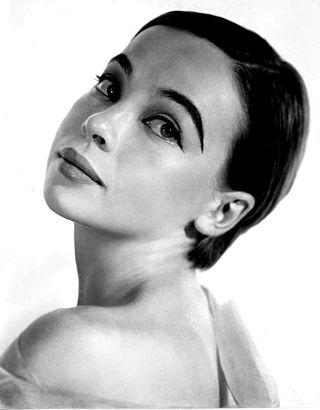
Leslie Claire Margaret Caron is a French and American actress and dancer. She is the recipient of a Golden Globe Award, two BAFTA Awards and a Primetime Emmy Award, in addition to nominations for two Academy Awards. She is one of the last surviving stars from the Golden Age of Hollywood cinema.
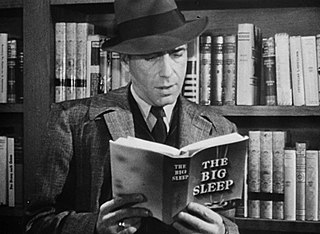
Philip Marlowe is a fictional character created by Raymond Chandler who was characteristic of the hardboiled crime fiction genre. The genre originated in the 1920s, notably in Black Mask magazine, in which Dashiell Hammett's The Continental Op and Sam Spade first appeared. Marlowe first appeared under that name in The Big Sleep, published in 1939. Chandler's early short stories, published in pulp magazines such as Black Mask and Dime Detective, featured similar characters with names like "Carmady" and "John Dalmas", starting in 1933.

Lady in the Lake is a 1947 American film noir starring Robert Montgomery, Audrey Totter, Lloyd Nolan, Tom Tully, Leon Ames and Jayne Meadows. An adaptation of the 1943 Raymond Chandler murder mystery The Lady in the Lake, the picture was also Montgomery's directorial debut, and last in either capacity for Metro-Goldwyn-Mayer (MGM) after eighteen years with the studio. Montgomery's use of point-of-view cinematography and its failure was blamed for the end of his career at MGM.

Gloria Grahame Hallward was an American actress. She began her acting career in theatre, and in 1944 made her first film for MGM.

In a Lonely Place is a 1950 American film noir directed by Nicholas Ray and starring Humphrey Bogart and Gloria Grahame, produced for Bogart's Santana Productions. The script was written by Andrew P. Solt from Edmund H. North's adaptation of Dorothy B. Hughes' 1947 novel of the same name.

Warren Mercer Oates was an American actor best known for his performances in several films directed by Sam Peckinpah, including The Wild Bunch (1969) and Bring Me the Head of Alfredo Garcia (1974). Another of his most acclaimed performances was as officer Sam Wood in In the Heat of the Night (1967). Oates starred in numerous films during the early 1970s that have since achieved cult status, such as The Hired Hand (1971), Two-Lane Blacktop (1971), and Race with the Devil (1975). Oates also portrayed John Dillinger in the biopic Dillinger (1973) and as the supporting character U.S. Army Sergeant Hulka in the military comedy Stripes (1981). Another notable appearance was in the classic New Zealand film Sleeping Dogs (1977), in which he played the commander of the American forces in the country.

Black Belt Jones is a 1974 American blaxploitation martial arts film directed by Robert Clouse and starring Jim Kelly and Gloria Hendry. The film is a spiritual successor to Clouse's prior film Enter the Dragon, in which Kelly had a supporting role. Here, Kelly features in his first starring role as the eponymous character; is a local hero who fights the Mafia and a local drug dealer threatening his friend's dojo.

The Glass Slipper (1955) is an American musical film adaptation of Cinderella, made by MGM, directed by Charles Walters and produced by Edwin H. Knopf from a screenplay by Helen Deutsch. The music score is by Bronislau Kaper, the cinematography by Arthur E. Arling, the art direction by Daniel B. Cathcart and Cedric Gibbons and costume design by Walter Plunkett and Helen Rose.

Human Desire is a 1954 American film noir drama starring Glenn Ford, Gloria Grahame and Broderick Crawford directed by Fritz Lang. It is loosely based on Émile Zola's 1890 novel La Bête humaine. The story had been filmed twice before: La Bête humaine (1938), directed by Jean Renoir, and Die Bestie im Menschen, starring Ilka Grüning (1920).

Daddy Long Legs (1955) is a Hollywood musical comedy film set in France, New York City, and the fictional college town of Walston, Massachusetts. The film was directed by Jean Negulesco, and stars Fred Astaire, Leslie Caron, Terry Moore, Fred Clark, and Thelma Ritter, with music and lyrics by Johnny Mercer. The screenplay was written by Phoebe Ephron and Henry Ephron, loosely based on the 1912 novel Daddy-Long-Legs by Jean Webster.
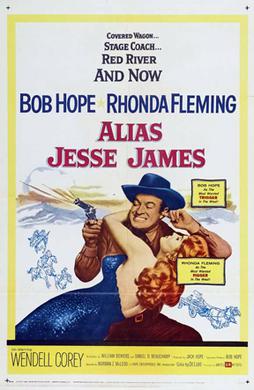
Alias Jesse James is a 1959 American Western comedy film directed by Norman Z. McLeod and starring Bob Hope and Rhonda Fleming. Based on a story by Robert St. Aubrey and Bert Lawrence, the film is about an outlaw who tries to kill an insurance agent who has been mistaken for him in order to collect on a big policy. Costumes by Edith Head.
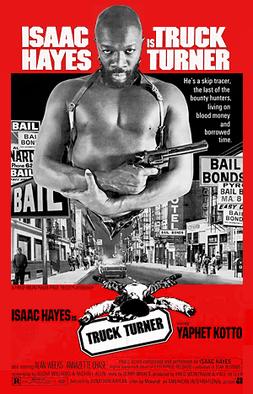
Truck Turner, also known as Black Bullet, is a 1974 blaxploitation film, starring Isaac Hayes and Yaphet Kotto, and directed by Jonathan Kaplan. The screenplay was written by Michael Allin, Leigh Chapman, and Oscar Williams. Hayes also scored the music for the soundtrack. The film was released by American International Pictures as a double feature with Foxy Brown.

Gaby is a 1956 American drama film directed by Curtis Bernhardt and starring Leslie Caron, John Kerr, Cedric Hardwicke, Taina Elg and Margalo Gillmore. It is the third version of the 1930 play Waterloo Bridge, previously made into films Waterloo Bridge (1931) and Waterloo Bridge (1940). It is the only version of the play made in color, and the least faithful to it. The title, the names of the main characters, and plot details were all changed. Unlike the 1931 and 1940 versions, this film ends happily.

In Old Santa Fe is a 1934 American Western film directed by David Howard, starring Ken Maynard, George "Gabby" Hayes and Evalyn Knapp and featuring the first screen appearance of Gene Autry, singing a bluegrass rendition of "Wyoming Waltz" accompanied by his own acoustic guitar with Smiley Burnette on accordion. Autry and Burnette were uncredited, but the scene served as a screen test for the duo for subsequent singing cowboy films, beginning with The Phantom Empire (1935), in which Autry had his first leading role.

The Cobweb is a 1955 American Eastmancolor MGM drama film. It was directed by Vincente Minnelli, and based on a novel by William Gibson. The film stars Richard Widmark, Lauren Bacall, Charles Boyer, and Gloria Grahame
Michael Stoddard Laughlin was an American film director, producer and screenwriter.

East of Sumatra is a 1953 American south seas adventure film directed by Budd Boetticher and starring Jeff Chandler, Marilyn Maxwell, Anthony Quinn and Suzan Ball.
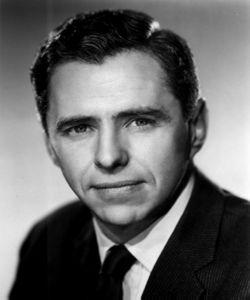
James Thomas Aubrey Jr. was an American television and film executive. As president of the CBS television network from 1959 to 1965, with his "smell for the blue-collar," he produced some of television's most enduring series on the air, including Gilligan's Island and The Beverly Hillbillies.

The Subterraneans is a 1960 American drama film directed by Ranald MacDougall based on the 1958 novel of the same name by Jack Kerouac.

Ray Kellogg was an American film and television actor. He was known for playing the role of Deputy Ollie in the American western television series The Life and Legend of Wyatt Earp.



















